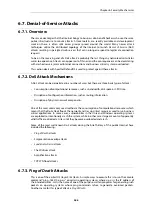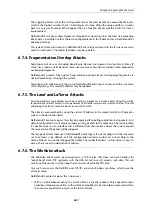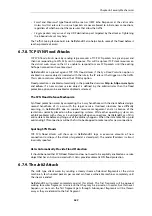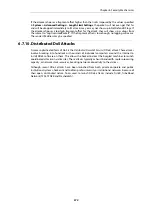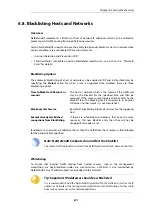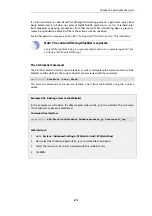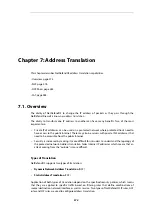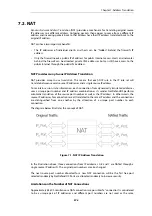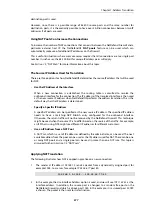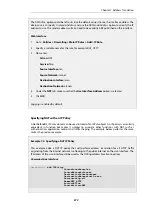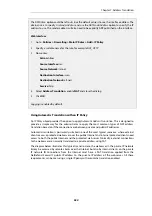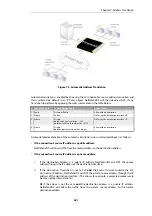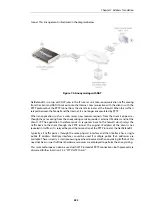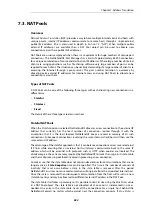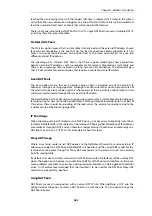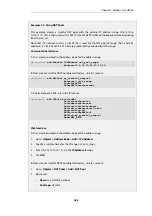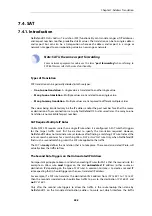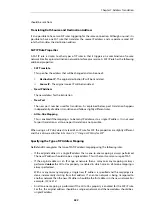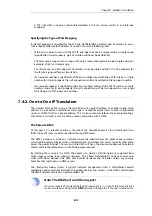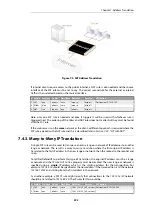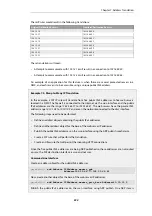
The
NATAction
option could be left out since the default value is to use the interface address. The
alternative is to specify
UseSenderAddress
and use the
NATSenderAddress
option to specify the IP
address to use. The sender address will also need to be explicitly ARP published on the interface.
Web Interface
1.
Go to: Policies > Firewalling > Main IP Rules > Add > IP Rule
2.
Specify a suitable name for the rule, for example
NAT_HTTP
3.
Now enter:
•
Action: NAT
•
Service: http
•
Source Interface: lan
•
Source Network: lannet
•
Destination Interface: wan
•
Destination Network: all-nets
4.
Under the NAT tab, make sure that the Use Interface Address option is selected
5.
Click OK
Logging is enabled by default.
Specifying NAT with an IP Policy
A NetDefendOS
IP Policy
object can be used instead of an
IP Rule
object. An IP policy is essentially
equivalent in function but makes it simpler to associate other functions with NAT such as
authentication, application control and traffic shaping. The example below performs the same
task as the previous example.
Example 7.2. Specifying a NAT IP Policy
This example adds a
NAT
IP policy that will perform address translation for all HTTP traffic
originating from the internal network
lan
flowing to the public Internet on the
wan
interface. The
IP address of the
wan
interface will be used as the NATing address for all connections.
Command-Line Interface
gw-world:/> add IPPolicy
SourceInterface=lan
SourceNetwork=lannet
DestinationInterface=wan
DestinationNetwork=all-nets
Service=http-all
Name=NAT_HTTP
Action=Allow
SourceAction=NAT
Chapter 7: Address Translation
579
Summary of Contents for NetDefendOS
Page 30: ...Figure 1 3 Packet Flow Schematic Part III Chapter 1 NetDefendOS Overview 30 ...
Page 32: ...Chapter 1 NetDefendOS Overview 32 ...
Page 144: ...Chapter 2 Management and Maintenance 144 ...
Page 284: ...Chapter 3 Fundamentals 284 ...
Page 392: ...Chapter 4 Routing 392 ...
Page 419: ... Host 2001 DB8 1 MAC 00 90 12 13 14 15 5 Click OK Chapter 5 DHCP Services 419 ...
Page 420: ...Chapter 5 DHCP Services 420 ...
Page 573: ...Chapter 6 Security Mechanisms 573 ...
Page 607: ...Chapter 7 Address Translation 607 ...
Page 666: ...Chapter 8 User Authentication 666 ...
Page 775: ...Chapter 9 VPN 775 ...
Page 819: ...Chapter 10 Traffic Management 819 ...
Page 842: ...Chapter 11 High Availability 842 ...
Page 866: ...Default Enabled Chapter 13 Advanced Settings 866 ...
Page 879: ...Chapter 13 Advanced Settings 879 ...


